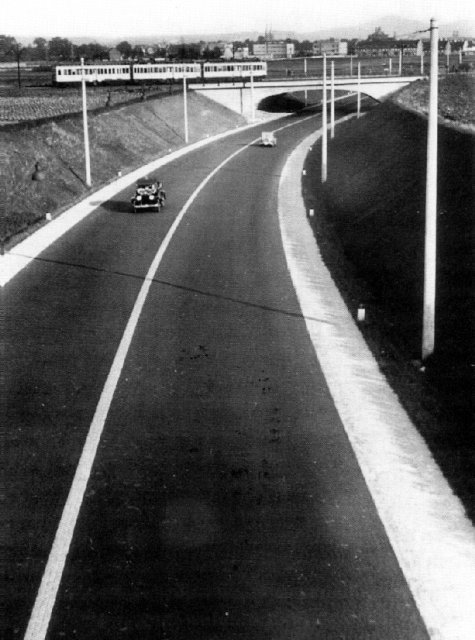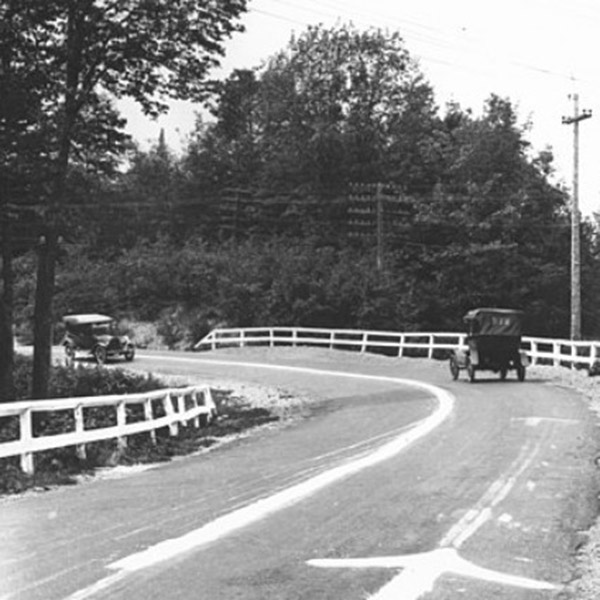
HOW DID THE FIRST ROAD LINE BEGIN?
HOW DID THE FIRST ROAD LINE BEGIN?
Initially, white line markings were used as an experiment to see if they would reduce collisions and accidents in highly prone areas. The first white line was believed to have been placed in Sutton Coldfield, Birmingham, as this was an area that faced recurring problems, particularly with careless driving. As this proved successful, road markings and their design became a vital safety feature on future roads. Road markings were implemented in various other countries in the following decades.

1911 - Birth of the road line
The world's first recorded painted road markings have appeared in Michigan in the U.S. The chairman of the Roads Board was inspired by witnessing a milk truck leaving a white trail on the road as it traveled. So you could argue that the first industrial painting project on roads was done with milk.
1918 - First road sign in the UK
In 1918, a white line was placed on some UK roads, which was actually the first marking to be applied. A few years later, these lines became prominent on many roads across the country.
1926 - Road marking made official
Interestingly, although the white line was used on almost all roads in the UK, it took nearly a decade for this marking to be recognized as an official feature.
1930 - White lines = "stop signs"
During the 30s, white lines were also known as "stop signs".
These signs are to help the flow of traffic, to keep movement under control,
were placed at intersections where cars would encounter police or traffic lights.
 1934 - First Cat's eye sign
1934 - First Cat's eye sign
The first cat's eye markings, the cat's eyes were placed in the center of the road to aid white lines at night and on foggy days with poor visibility.
1938 - First professional road marking machine
In the City of Sydney, Australia, the first white central road markings are painted using a machine.
1951 - First zebra crossing
Zebra crossings were first painted in the United Kingdom and their popularity later inspired many industrial painting projects around the world.
The next time you go out for a drive, notice how you subconsciously follow the unspoken rules those paint stripes convey to you. And perhaps think for a moment about the chaos we would live in without them. The reason why our road systems in the developed world work so smoothly is because of drivers who obey road lines and markings unconditionally.

1911 - Birth of the road line
The world's first recorded painted road markings have appeared in Michigan in the U.S. The chairman of the Roads Board was inspired by witnessing a milk truck leaving a white trail on the road as it traveled. So you could argue that the first industrial painting project on roads was done with milk.
1918 - First road sign in the UK
In 1918, a white line was placed on some UK roads, which was actually the first marking to be applied. A few years later, these lines became prominent on many roads across the country.
1926 - Road marking made official
Interestingly, although the white line was used on almost all roads in the UK, it took nearly a decade for this marking to be recognized as an official feature.
1930 - White lines = "stop signs"
During the 30s, white lines were also known as "stop signs".
These signs are to help the flow of traffic, to keep movement under control,
were placed at intersections where cars would encounter police or traffic lights.
 1934 - First Cat's eye sign
1934 - First Cat's eye signThe first cat's eye markings, the cat's eyes were placed in the center of the road to aid white lines at night and on foggy days with poor visibility.
1938 - First professional road marking machine
In the City of Sydney, Australia, the first white central road markings are painted using a machine.
1951 - First zebra crossing
Zebra crossings were first painted in the United Kingdom and their popularity later inspired many industrial painting projects around the world.
The next time you go out for a drive, notice how you subconsciously follow the unspoken rules those paint stripes convey to you. And perhaps think for a moment about the chaos we would live in without them. The reason why our road systems in the developed world work so smoothly is because of drivers who obey road lines and markings unconditionally.








